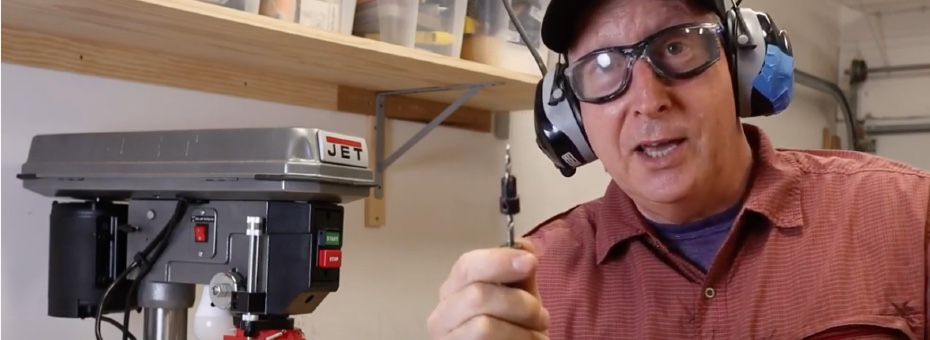Part two of a series. Watch part one.
Hi, everyone. This is Art Smalley, president of Art of Lean, Incorporated, and on behalf of the Lean Enterprise Institute, I have another short video clip for you. This one is a follow up to the video I did last time about E.C.R.S., which stands for Eliminate, Combine, Rearrange, and Simplify. This time, instead of just explaining the concept, I want to show you some pictures and examples that I hope will help lock it home in your memory banks, so you can apply this at home and work or wherever you choose to apply it. Stick around. I think you’ll enjoy it.
Eliminate
Okay. Let’s dive into the E for the elimination part of E.C.R.S. The roots of this, as I mentioned in the previous video, come from the TWI Job Methods Course and the concept of eliminating unnecessary details. It was a phrase they coined and used in the book, and they had specific types and examples. And eventually, in Toyota, this morphed into the concept of elimination of waste and the seven types of waste. But it doesn’t end just there.
And anytime you analyze stuff, like standardized work for example, you get to the one second, one step, one motion level of detail, you’re going to find things. The more details you look at, the more you’re likely to find. This was part of the combination that went into Toyota of respect for people and continuous improvement can be done simultaneously. Now, that’s not the only way to think about it. You don’t have to box yourself into that type of rigid of an example.
Any job you do in life, whether it’s writing purchase orders, being cashier, working as a nurse, a doctor, lawyer, you’ve got steps. You’ve got procedures. You’ve got actions you follow, and if you reflect on them and look at them in detail, you’re going to find areas for improvement. The first angle with the E.C.R.S. framework is to say, “What can I subtract? What is difficult? What does not add value? How can I take that out of the equation and make it easier and better?” Okay? That’s the E concept for E.C.R.S., eliminate.
Combine
Okay, let’s move forward onto the C part of E.C.R.S., which stands for combine or combination. Very often, you can get a tremendous improvement by combining things and getting a two-for-one type of result. And you see a lot of this in the world when you stop and look for it. Opportunities abound. For example, I moved recently, and I had to order some packaging materials and things on Amazon to facilitate the move. I ordered four bags, long bags, about three-feet long to pack things in, that were not a standard size. I wound up getting four.
I expected to get four in one box from Amazon, but I got four of these suitcase-type packages. I also got four boxes and four levels of padding and packing that I didn’t want. And each of the boxes was 80% air, so I know Amazon knows better than this, but people don’t always execute correctly, no offense. What should have been caught or realized or thought about is, “Gee, I can pack four of these suitcase-type objects into one box, combine four into one, and have a lot better outcome for the organization as well as the end-user myself.”
Now, fortunately, I did use the boxes for packaging as well, and I wound up reusing them in another sense by giving them to another person after I moved. So, I got my use out of them, but combining could have been a better solution in the first step. That’s one example.
Okay, combination example number two. I’m going to drill a hole in this board, an eighth-inch, and then a countersink it in a two-step process. So, step one, drill the hole. All right. Right, you should see there, I drilled a hole. But now the customer requires a countersink to that face because each screw will go into it. So you have to change the bit and drill that hole. Okay, step two, run the countersink.
Okay. Now, I’m not sure you can see it on this or not, but there’s a little counter-sink or recess that’s been cut so a screw will sit flatter into that little concave surface we created. Okay? Now there’s nothing wrong with that, but it was a two-step process, and in the spirit of Combine, we can put two steps into one by using a more advanced tool. This tool has the drilling apparatus and the countersink apparatus, so that as you drill, you will create the counter step in a two-for-one.
So this time, we’ll drill it, two steps in one. So this time, we got the same result. The hole, the countersink, two steps in one, took seconds, and I eliminated a bunch of unnecessary work in addition to combining two steps. So, this was really a double win in that sense. So, a good example of combining things in a way that allows you to eliminate unnecessary steps, motions, and details–and gets you a better end result, easier for me. Value add, meaning the customer requirements. I hope that makes sense.
Rearrange
Let’s move on to R, and the concept of rearrangement or rearranging things for improvement. Here’s a simple example. I moved into my new office, and I got to set it up the way I like. I rearranged the office, which was better for me. I also got to build some better bookshelves, and I got to rearrange the books on the shelves the way I’ve wanted to for decades. Put them into one place, and have them arranged by category. By building my own, they were strong enough to support everything, and I could put them all in one place for better visual control for me. I think it’s a unique case where I’m both customer and employee.
Another example of rearrangement, you can think of micro and macro levels of this aspect, in all seriousness. Standardized work, time and motion studies. Motion analysis, things like that. They are looking at motion on a micro level and just asking you to think about any sequence of events and how you can rearrange it so it’s more optimal for the series of tasks or work you’re performing. Flow charting’s another thing, on another level, okay?
And a bigger level than that, value stream mapping across an enterprise. What are you doing? You’re seeking to rearrange and optimize things. Oh, and by the way, eliminate and combine a few things while you’re at it to get a better total solution for value flowing through an entire chain of events. So, lots of good examples come along with rearrange. I’m sure you can think of them in your daily life, in your workspace as well.
Simplify
And last but not least is the S part of the framework of E.C.R.S., which stands for simplify. This is actually a very old topic. You can easily trace this back inhistory over 100 years. All you have to do is Google the term, and you’ll see lots of interesting literature behind it and the original time-and-motion studies and people doing industrial engineering. A man who capitalized upon that and became known as the father of work simplification is named Allan H. Mogensen. He not only popularized flow charts, but he was known as the father of workplace simplification. He had books, lectures, and training and conferences, and popularized the term in the 30s, 40s, 50s, and 60s. Many people have gone on and copied his work and developed it, taken it further to other levels, which is great. Which is I’m sure what he would want or any author or consultant hopes that the next generation will take it and make it better.
But, I want you to always think that, no matter how hard the task is, if you can’t eliminate, combine, or rearrange things, you can always study things at the detail level, the difficulty level, and say, “What do I do to just simplify this and make it easier to do?” Because that always nets you a better result in the long run as well.
Okay, so there it is, the framework, E.C.R.S.: Eliminate, Combine, Rearrange, Simplify. I hope that I unlocked it better for you with some examples and a little bit of history to lock it in your mind. By no means is it a perfect, what we call a MECE framework, mutually exclusive, collectively exhaustive. Still, there is a little bit of overlap when you think about it, and of course, there are other things you can throw in there like substitute, standardize, synchronize, automate, and knock yourself dead. Go make it the eight-letter framework, but it’s a powerful tool.
I like to think about it in any situation at first glance when I see something, and I think, “Okay, what can we do to help the situation by teaching the Elimination, Combination, Rearrangement, and Simplification angle, so that people can come up with a better solution?” I hope you found that interesting, and I’m looking forward to seeing you in the next video. Have a great day.
Process Improvement
Capture and internalize all the elements you need to continuously improve work processes at the job level.






